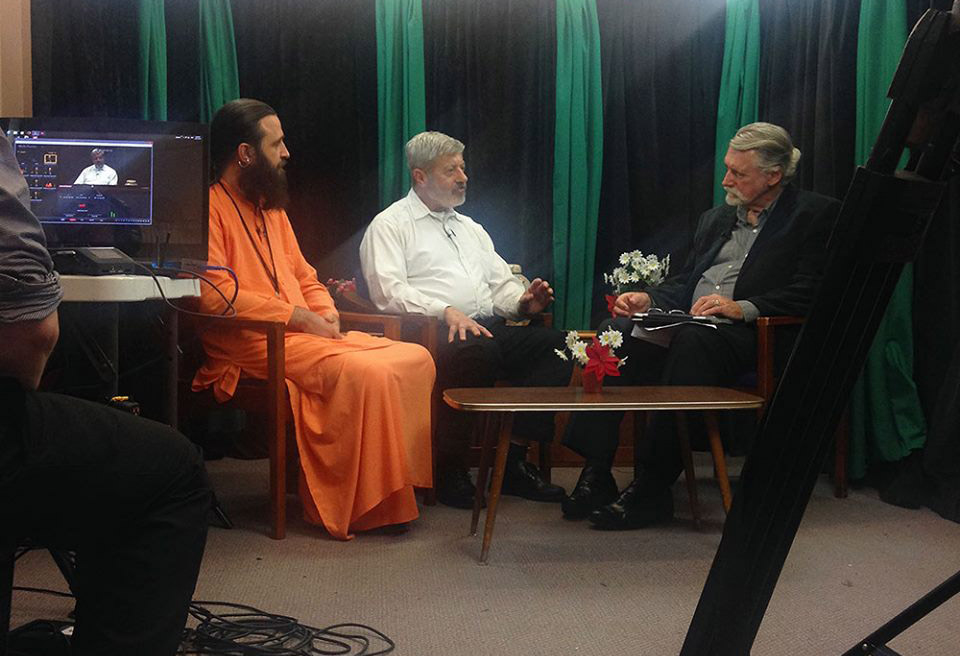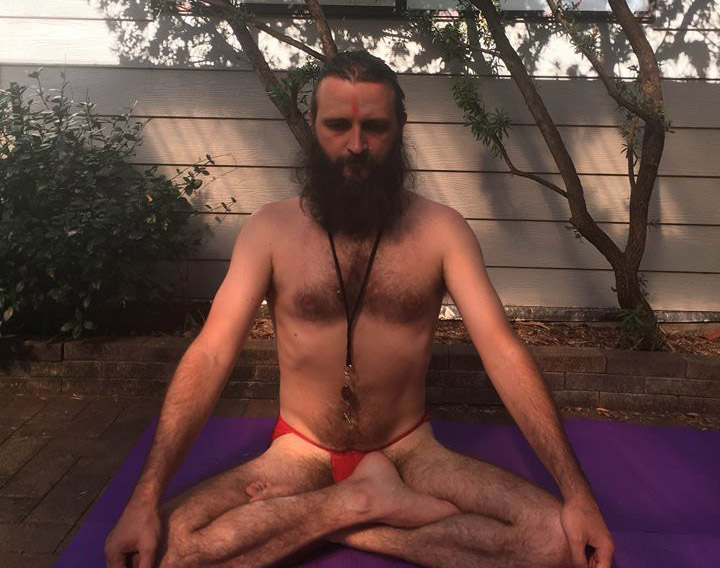One of the very common problems associated with understanding the Tradition is how to perceive Gorakśanāth and nathās in general. People often ask me, “I worship Durgā, Gaṇeśa or Viṣṇu and what should I do, if Gorakśanāth, Śiva and nathā are Śaivas?” There are even many attempts to argue what yoga or some of its specific forms are more related to, (with Shivaism, Vaishnavism or with Buddhism, etc.). Yoga is just yoga and that’s it. But it is a matter of choice to determine its relation.It so happened that India is a very religious country and in this regard it is very unique. Religion there permeates everything, therefore it is natural that yoga is tied to one or another belief system and a method of worship. To make you understand who Gorakshanāth is, I will give the following example. There is the famous mantra ॐ शिव गोरक्ष योगी ‘Om Śiva Gorakśa Yogi‘ and a shorter version of the Śabar-mantra, which should be correctly called ‘nama’ शिव गोरख śiv gorakh. However, they did not appear in any “canonical Tantras”. Everything that can be found is the Gorakshanāth mantra in some Tantras, for example, in the Puraścaryārṇava-tantra, which quotes the Kalpadruma-tantra, describing the dialogue between Garga ṛśi and Kṛṣṇa. Garga talks there about Gorakshanāth–upāsana practice.
बिन गोरक्ष मंत्रेण योग सिद्धिर्न जायते |
गोराक्षस्य प्रसादेन सर्व सिद्धिर्न संशय ||
bina gorakṣa maṃtreṇa yoga siddhirna jāyate |
gorākṣasya prasādena sarva siddhirna saṃśaya ||
It is impossible to achieve success in yoga without the Gorakśanātha mantra.
There is no doubt that by the grace of Gorakśanātha any success (perfection) is gained.
The text describes the nature of Gorakśanātha and also the fact that the worship of Gorakśanātha is super-secret and his upāsana is the essence of the Vedas. His pūjā, viniyoga, nyāsa, sahasranāma, recommendations for puraścarana and many standard recommendations for tantra are described there. But, I propose to draw the attention to the Gorakśanātha mantras themselves, which are described in the text. They have different numbers of akṣaras (syllables).
ह्रीं श्रीं गों गोरक्ष हुं फट स्वाहा |
ह्रीं श्रीं गों गोरक्ष हुं हुं निरञ्जनात्मने हुं फट स्वाहा |
श्रीं गों लीं हं हां गोरक्षनाथाय निरञ्जनात्मने हं सं सं फट हंस: |
oṃ hrīṃ śrīṃ goṃ gorakṣa huṃ phaṭ svāhā |
oṃ hrīṃ śrīṃ goṃ gōrakṣa huṃ huṃ nirañjanātmane huṃ phaṭ svāhā |
oṃ śrīṃ goṃ līṃ haṃ hāṃ gorakṣanāthāya nirañjanātmane haṃ saṃ phaṭ haṃsa |
Gorakśa–gāyatri is also mentioned:
ह्रीं श्रीं गों गोरक्षनाथाय विदमहे शुन्य पुत्राय धीमहि तन्नो गोरक्ष गोरक्ष निरञ्जन प्रचोदयात् |
oṃ hrīṃ śrīṃ goṃ gorakṣanāthāya vidamahē śunya putrāya dhīmahi
tanno gorakṣa nirañjana pracodayāta |
It says that he is śūnya putra (born out of Emptiness or the son of emptiness), also he is nirānjānā (unblemished). In different ślokas it is mentioned that he manifests himself in the form of the spiritual light, etc. However, these mantras do not explicitly say that he is Śiva. But certainly, if Śiva can be present beyond the limits of qualities (nirguṇa), if he is the transcendental light (prakāśa), then why he cannot be Gorakśanātha, especially for someone who worship Śiva? Of course he can, just like for a Vaishnava he can be Viṣṇu, because Viṣṇu derived from the root ‘viṣ’ – the one who permeates the entire universe, since emptiness is omnipresent and it is pure nirānjānā (this is a well-known term, which is often used in relation to Viṣṇu).
Imagine if you are a Muslim and a Sufi for example, and you want to worship Gorakśanāth. How will you worship him? Perhaps, not in the same manner as Śiva and Viṣṇu, but as a great saint. The same, if you are a Buddhist, and for you Gorakśanāth will most likely be an enlightened mahasiddha, etc. In the Nātha Sampradaya there were quite a few people belonging to different dharmas, there were also Muslims too, Viṣṇu and Śiva devotees, as well as various forms of Śakti, Buddhists e.t.c. We cannot say that Gorakśanāth is present in only one of the many forms – for the yogi he is beyond all forms, even divine ones. But, he is also present in all forms as well. Nevertheless, for a correct understanding the emphasis must be put on the fact that Gorakśanāth is beyond the limits. This fact makes it possible to understand the Nātha Sampradaya and its main reference points. Of course, the majority of nātha prefer to perceive Gorakśanāth as Śiva, but I would not say they are Shaivites, or Vaishnavas, or Shaktas, etc. It would be more correct to say they are Yogis and their path is Yoga. If we proceed from that, then many things immediately fall into place: you are a yogi, you can be Śaiva or not, but you remain a yogi. You can say the same thing on whether you like to combine yoga with Viṣṇu upāsana or not e.t.c. To combine yoga with something or practice it “by itself”, you need to consider several things.
Firstly, there is the simplicity of yoga, without any contradictions. Since you comprehend one element of your faith in a very strict way, you cannot perceive anything else. Secondly, the simplicity has the kind of “ essence of everything” in it, which allows it to be present in everything or, if it is present by itself without everything – it should not become an abstract and special form of limitation (otherwise, it will contradict freedom, which is what yoga is for).
It follows from the foregoing that any upāsaka can be a nātha and most importantly, he can be just a nātha-yogi and no one else, or everything at once.








